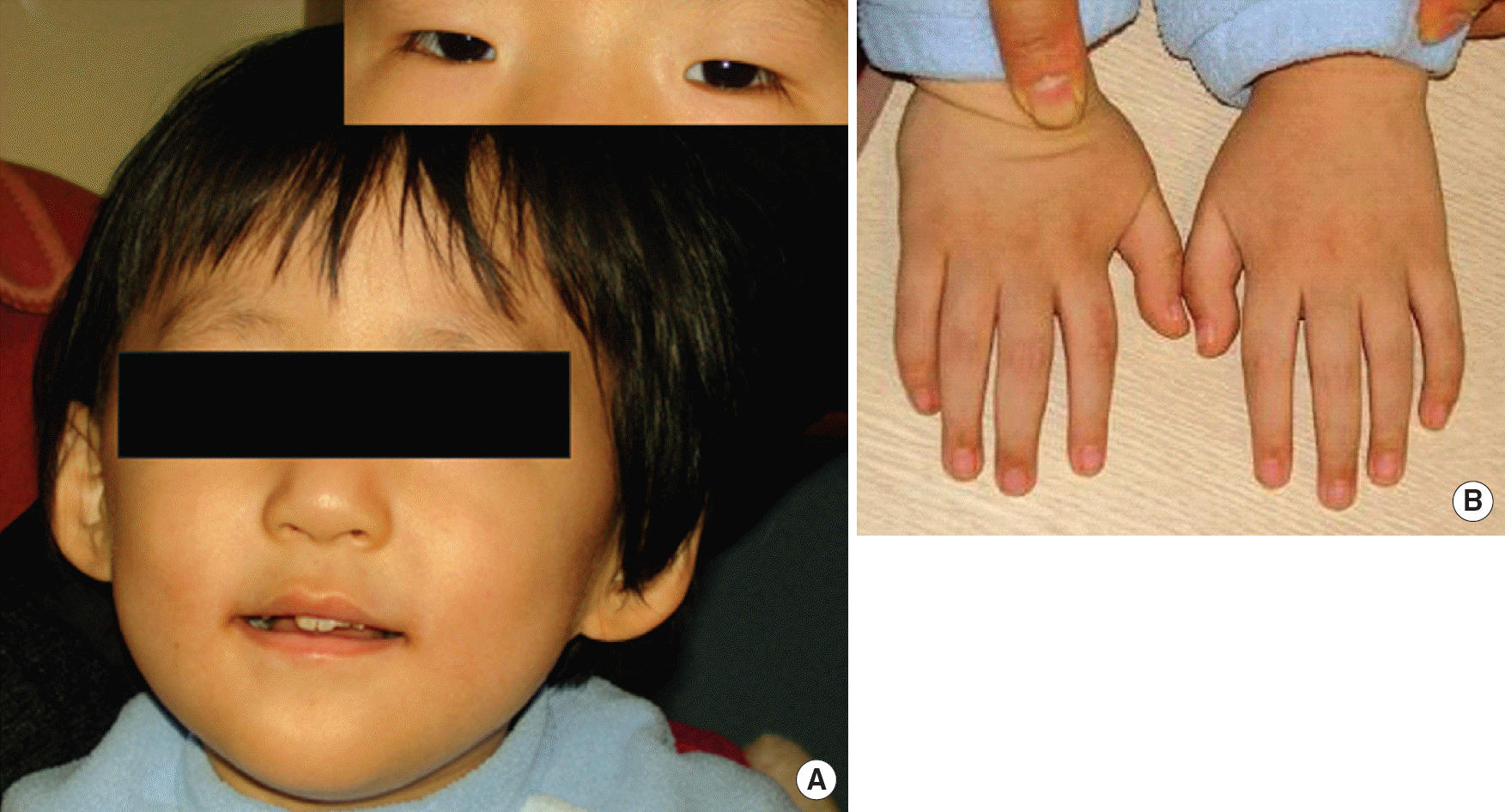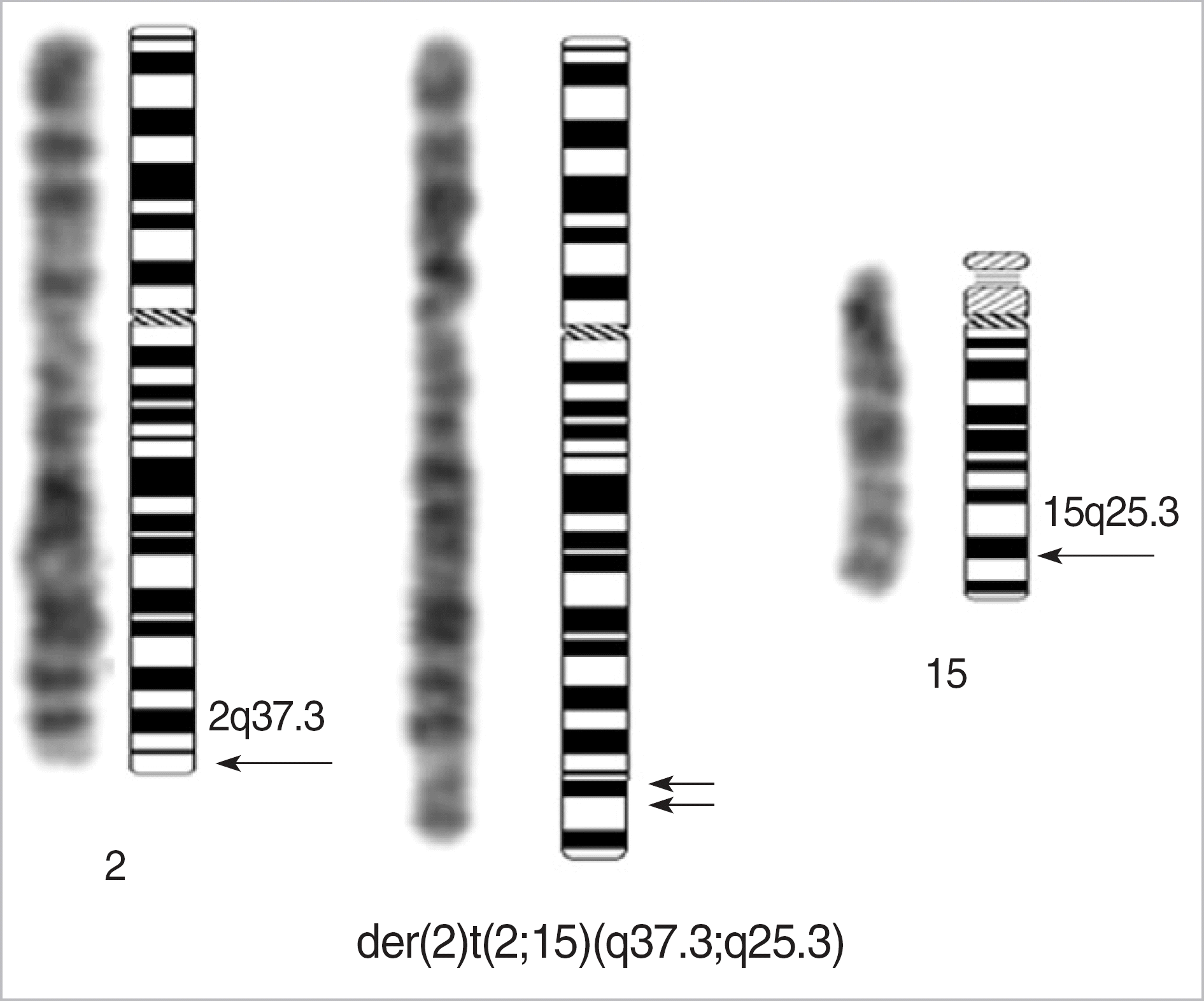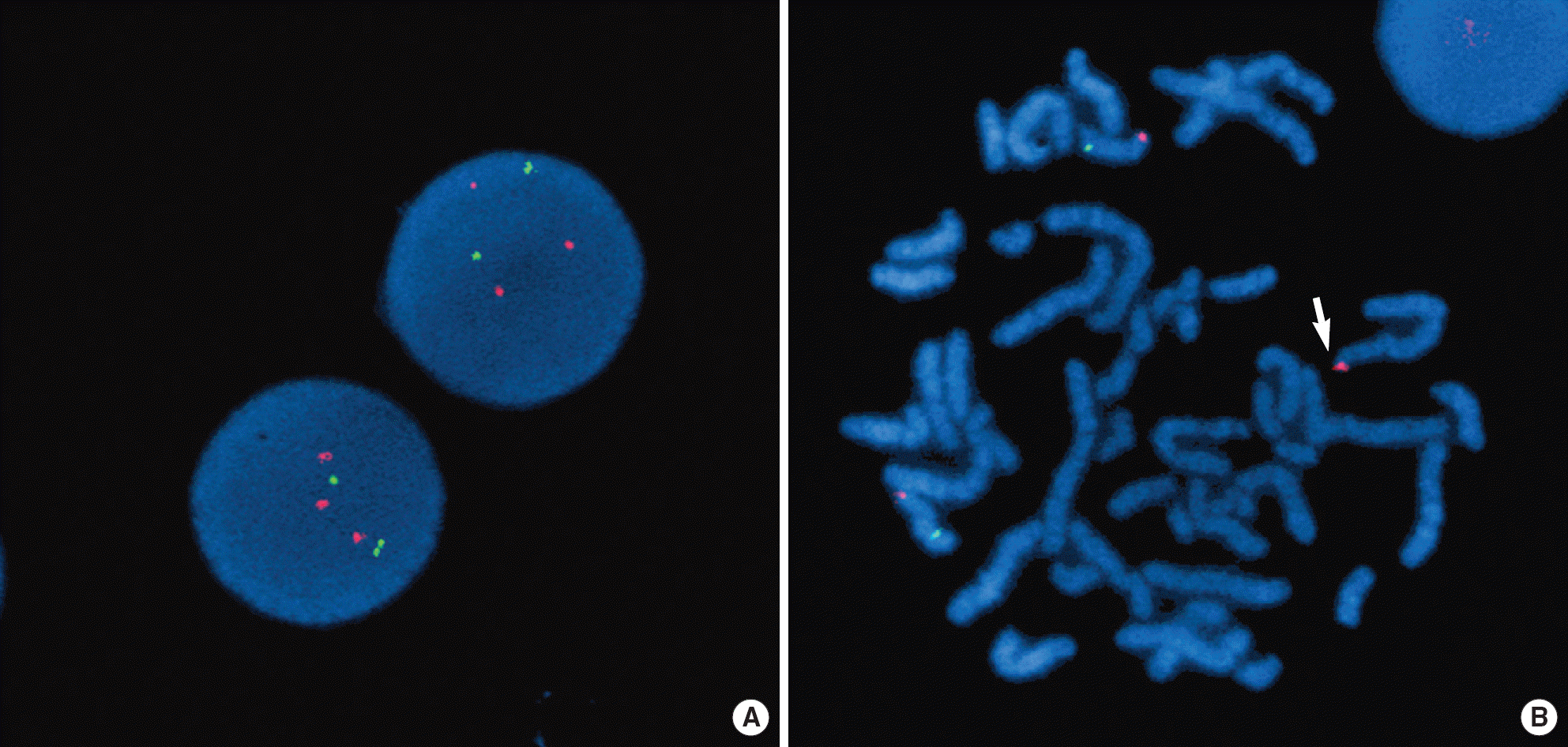Abstract
A 15q25-qter partial trisomy characterized by pre or postnatal overgrowth, tall stature, macro-cephaly and craniosynostosis has rarely been reported. The cause of overgrowth has been thought to be the triplication of the insulin-like growth factor 1 receptor (IGF1R) gene located on the 15q26.3. We report a patient with partial trisomy 15q25.3-qter showing mental retardation, developmental delay, macrocephaly, long narrow face, ptosis, high palate arch, scoliosis, clinodactyly and overgrowth. Additional material located on terminal 2q was found in karyotyping analysis. In bacterial artificial chromosome (BAC) clone-based-array comparative genomic hybridization (aCGH) analysis, a gain of 31 clones on 15q25.3-qter and a loss of 2 clones on 2q37.3 were observed. An extra copy of IGF1R gene was observed on derivative chromosome 2 in FISH analysis. In conclusion, the patient was diagnosed to have de novo 46,XX,der(2)t(2;15)(q37.3;q25.3) chromosome complement. Adequate genetic counseling and regular follow-ups would be needed for the patient.
REFERENCES
1.Zollino M., Tiziano F., Di Stefano C., Neri G. Partial duplication of the long arm of chromosome 15: confirmation of a causative role in craniosynostosis and definition of a 15q25-qter trisomy syndrome. Am J Med Genet. 1999. 87:391–4.

2.Nagai T., Shimokawa O., Harada N., Sakazume S., Ohashi H., Matsumoto N, et al. Postnatal overgrowth by 15q-trisomy and intrauterine growth retardation by 15q-monosomy due to familial translocation t (13;15): dosage effect of IGF1R? Am J Med Genet. 2002. 113:173–7.
3.Faivre L., Gosset P., Cormier-Daire V., Odent S., Amiel J., Giurgea I, et al. Overgrowth and trisomy 15q26.1-qter including the IGF1 receptor gene: report of two families and review of the literature. Eur J Hum Genet. 2002. 10:699–706.

4.Faivre L., Rousseau T., Laurent N., Gosset P., Sanlaville D., Thauvin-Robinet C, et al. Prenatal overgrowth and mosaic trisomy 15q25-qter including the IGF1 receptor gene. Prenat Diagn. 2004. 24:393–5.

5.Roggenbuck JA., Mendelsohn NJ., Tenenholz B., Ladda RL., Fink JM. Duplication of the distal long arm of chromosome 15: report of three new patients and review of the literature. Am J Med Genet A. 2004. 126:398–402.

6.Partington MW., Fagan K., Soubjaki V., Turner G. Translocations involving 4p16.3 in three families: deletion causing the Pitt-Rogers-Danks syndrome and duplication resulting in a new overgrowth syndrome. J Med Genet. 1997. 34:719–28.

8.Faivre L., Viot G., Prieur M., Turleau C., Gosset P., Romana S, et al. Apparent Sotos syndrome (cerebral gigantism) in a child with trisomy 20p11.2-p12.1 mosaicism. Am J Med Genet. 2000. 91:273–6.

9.Baker J., Liu JP., Robertson EJ., Efstratiadis A. Role of insulin-like growth factors in embryonic and postnatal growth. Cell. 1993. 75:73–82.

10.Roback EW., Barakat AJ., Dev VG., Mbikay M., Chrétien M., Butler MG. An infant with deletion of the distal long arm of chromosome 15 (q26.1-qter) and loss of insulin-like growth factor 1 receptor gene. Am J Med Genet. 1991. 38:74–9.

11.Okubo Y., Siddle K., Firth H., O'Rahilly S., Wilson LC., Willatt L, et al. Cell proliferation activities on skin fibroblasts from a short child with absence of one copy of the type 1 insulin-like growth factor receptor (IGF1R) gene and a tall child with three copies of the IGF1R gene. J Clin Endocrinol Metab. 2003. 88:5981–8.

12.Shrimpton AE., Braddock BR., Thomson LL., Stein CK., Hoo JJ. Molecular delineation of deletions on 2q37.3 in three cases with an Albright hereditary osteodystrophy-like phenotype. Clin Genet. 2004. 66:537–44.

Fig. 1.
Photographs of the patient. Note long and triangular face, low-set ears, flat nasal bridge, and ptosis (A); and long fingers and clinodactyly of 4th and 5th fingers of both hands (B).

Fig. 3.
The ratio plots from array comparative genomic hybridization (aCGH). Normalized data in which the test sample was labeled with cyanine 3 are shown in blue, while that in which the test sample was labeled with cyanine 5 are shown in red. A gain of a particular clone is manifested as a positive (upward) deviation of the blue signal from modal value 0.25 and a negative (downward) deviation of the red signal from −0.25 for same clone. Conversely, a loss of a clone shows the opposite pattern. (A) A two-clone loss on 2q37.3 (arrows) and (B) a thirty one-clone gain on 15q25.3-qter (between arrows) are found.





 PDF
PDF ePub
ePub Citation
Citation Print
Print




 XML Download
XML Download